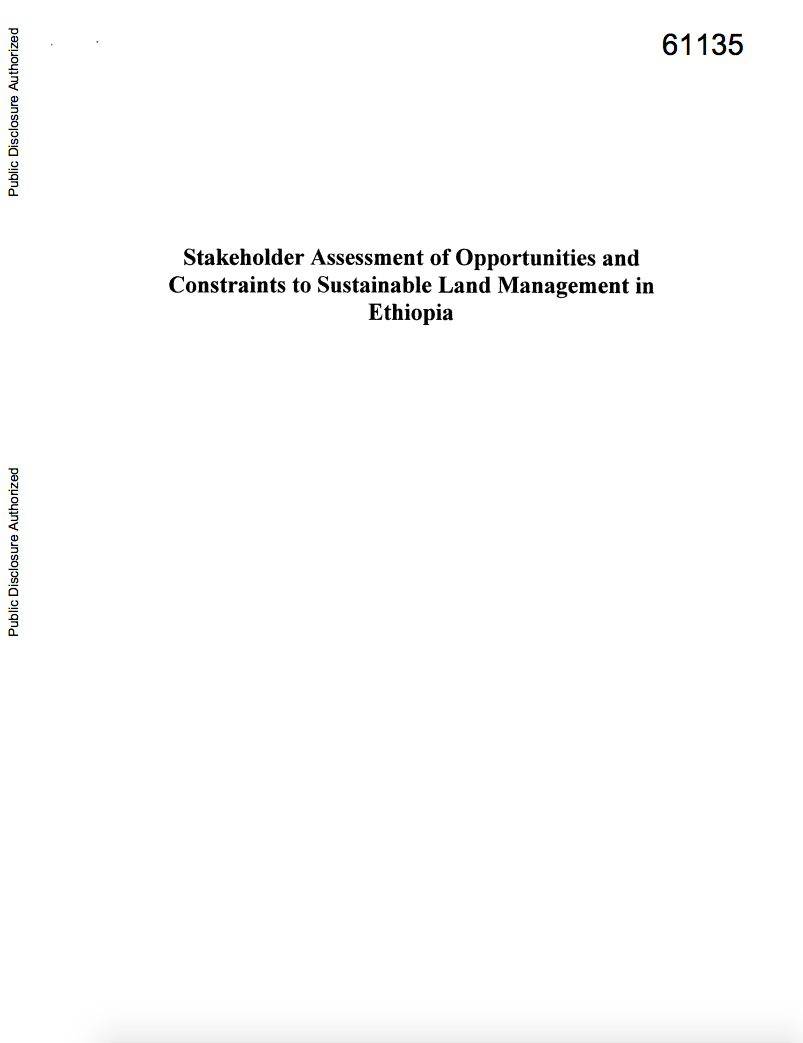The World Bank is a vital source of financial and technical assistance to developing countries around the world. We are not a bank in the ordinary sense but a unique partnership to reduce poverty and support development. The World Bank Group has two ambitious goals: End extreme poverty within a generation and boost shared prosperity.
- To end extreme poverty, the Bank's goal is to decrease the percentage of people living on less than $1.25 a day to no more than 3% by 2030.
- To promote shared prosperity, the goal is to promote income growth of the bottom 40% of the population in each country.
The World Bank Group comprises five institutions managed by their member countries.
The World Bank Group and Land: Working to protect the rights of existing land users and to help secure benefits for smallholder farmers
The World Bank (IBRD and IDA) interacts primarily with governments to increase agricultural productivity, strengthen land tenure policies and improve land governance. More than 90% of the World Bank’s agriculture portfolio focuses on the productivity and access to markets by small holder farmers. Ten percent of our projects focus on the governance of land tenure.
Similarly, investments by the International Finance Corporation (IFC), the World Bank Group’s private sector arm, including those in larger scale enterprises, overwhelmingly support smallholder farmers through improved access to finance, inputs and markets, and as direct suppliers. IFC invests in environmentally and socially sustainable private enterprises in all parts of the value chain (inputs such as irrigation and fertilizers, primary production, processing, transport and storage, traders, and risk management facilities including weather/crop insurance, warehouse financing, etc
For more information, visit the World Bank Group and land and food security (https://www.worldbank.org/en/topic/agriculture/brief/land-and-food-security1
Resources
Displaying 3886 - 3890 of 4907Creating Jobs in South Asia’s Conflict Zones
This paper describes the key challenges
to job creation in conflict-affected environments in South
Asia. It uses household survey data since the early 2000s
for Afghanistan, India, Nepal, and Sri Lanka to document the
characteristics of labor markets in conflict-affected areas,
exploiting the spatial and time variation in armed conflict
within countries. The analysis finds that, across countries,
labor markets look very different in conflict-affected areas
A Cost Effective Solution to Reduce Disaster Losses in Developing Countries : Hydro-Meteorological Services, Early Warning, and Evacuation
In Europe, it can be estimated that hydro-meteorological information and early warning systems save several hundreds of lives per year, avoid between 460 million and 2.7 billion Euros of disaster asset losses per year, and produce between 3.4 and 34 billion of additional benefits per year through the optimization of economic production in weather-sensitive sectors (agriculture, energy, etc.).
Using Performance Incentives to Improve Health Outcomes
This study examines the effect of
performance incentives for health care providers to provide
more and higher quality care in Rwanda on child health
outcomes. The authors find that the incentives had a large
and significant effect on the weight-for-age of children
0-11 months and on the height-for-age of children 24-49
months. They attribute this improvement to increases in the
use and quality of prenatal and postnatal care. Consistent
Financing Infrastructure and Monitoring Fiscal Risks at the Subnational Level
This paper explores the building blocks of an institutional framework to govern borrowing by subnational entities to finance infrastructure investment. The framework should help in achieving sustainable financing of development needs and sound management of fiscal risks. Based on international experience, the authors suggest a minimum set of indicators for monitoring fiscal and debt developments. Recognizing the different nature and operations of the subnational entities, they propose specific indicators for special purpose vehicles and the government's general budget.
Stakeholder Assessment of Opportunities and Constraints to Sustainable Land Management in Ethiopia
Stakeholders' perceptions of
opportunities and constraints to sustainable land management
in Ethiopia was assessed through interviews and a review of
secondary data. Stakeholders included farmers as well as
representatives of development agencies, agricultural
organizations, donors, nongovernmental organizations (NGOs),
and agricultural research systems. Stakeholders generally
perceive that the numerous, well-intentioned but piecemeal







